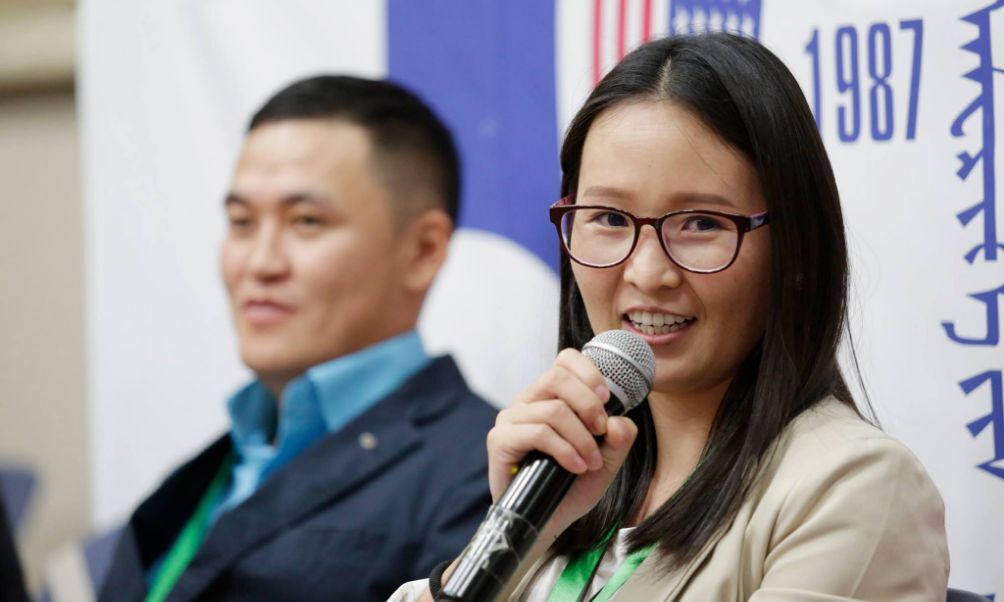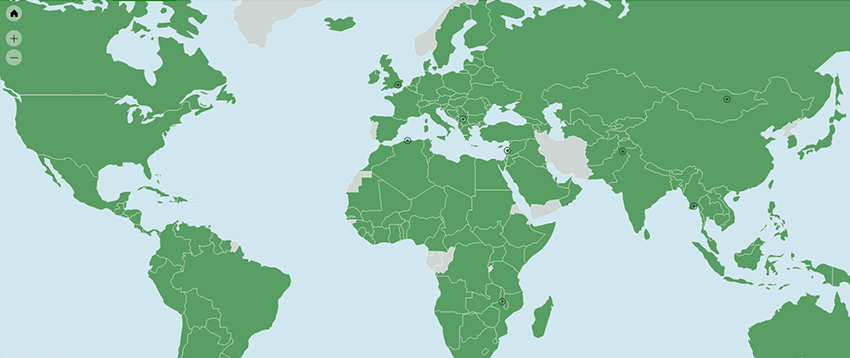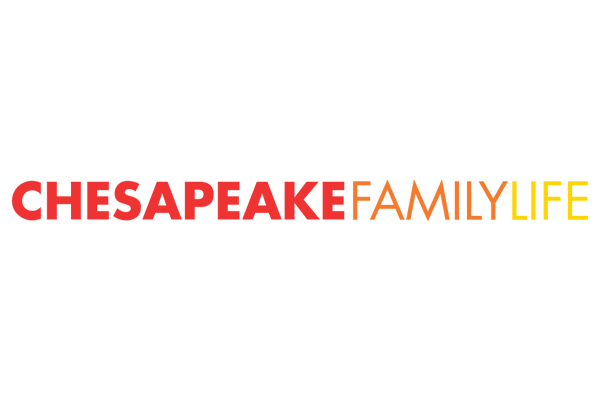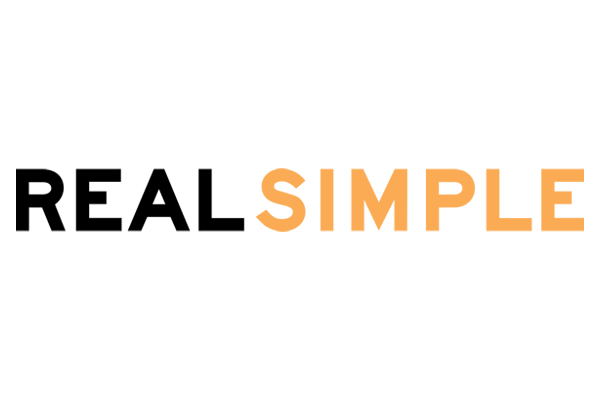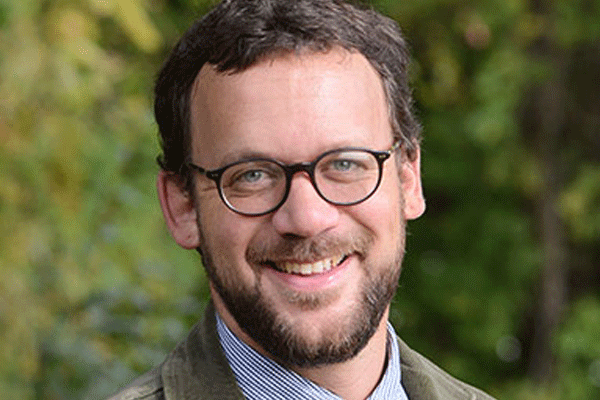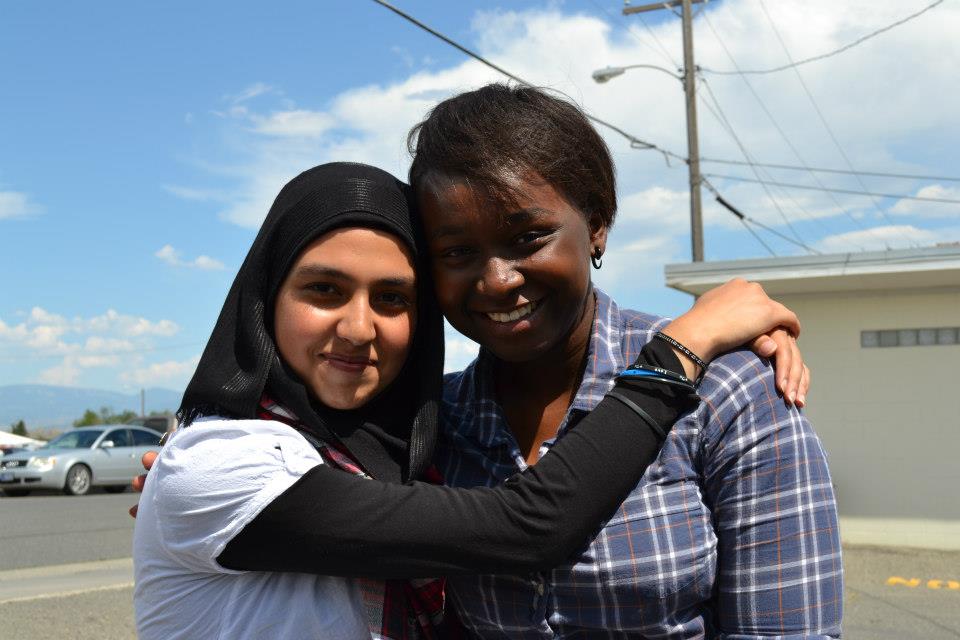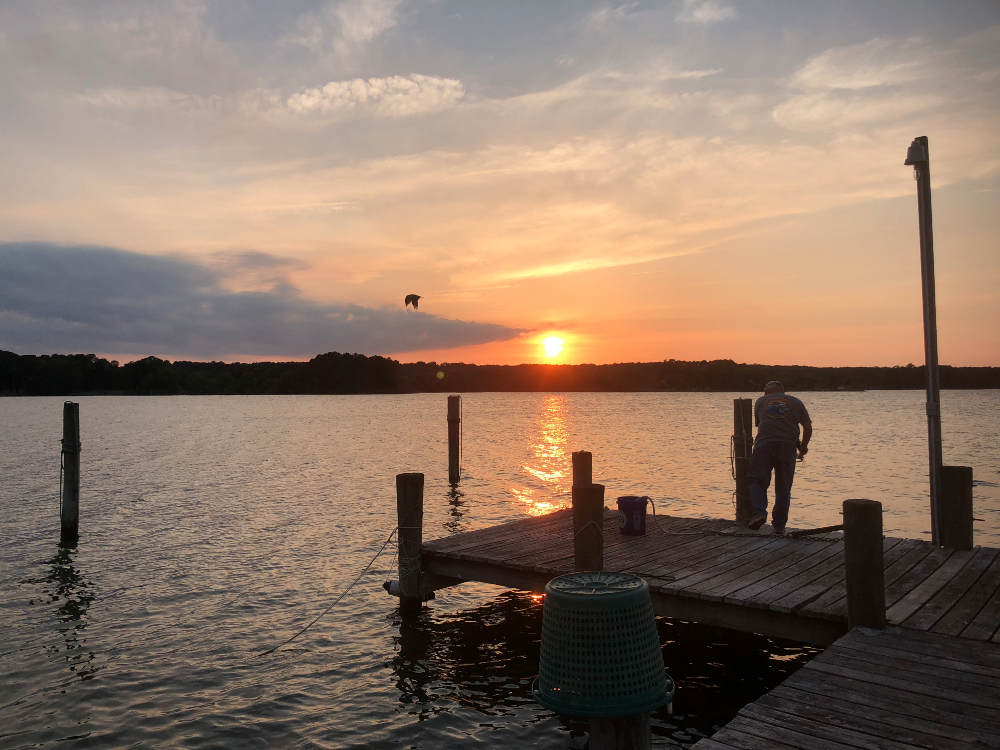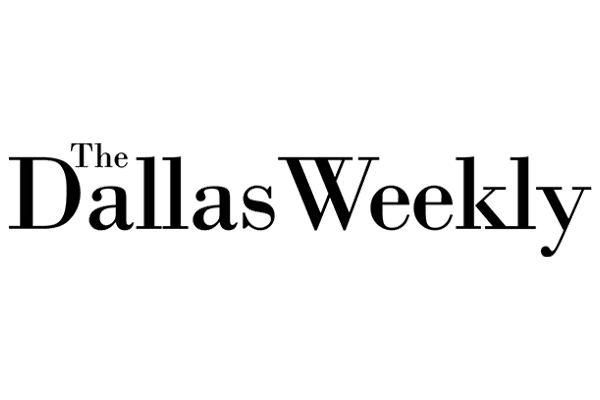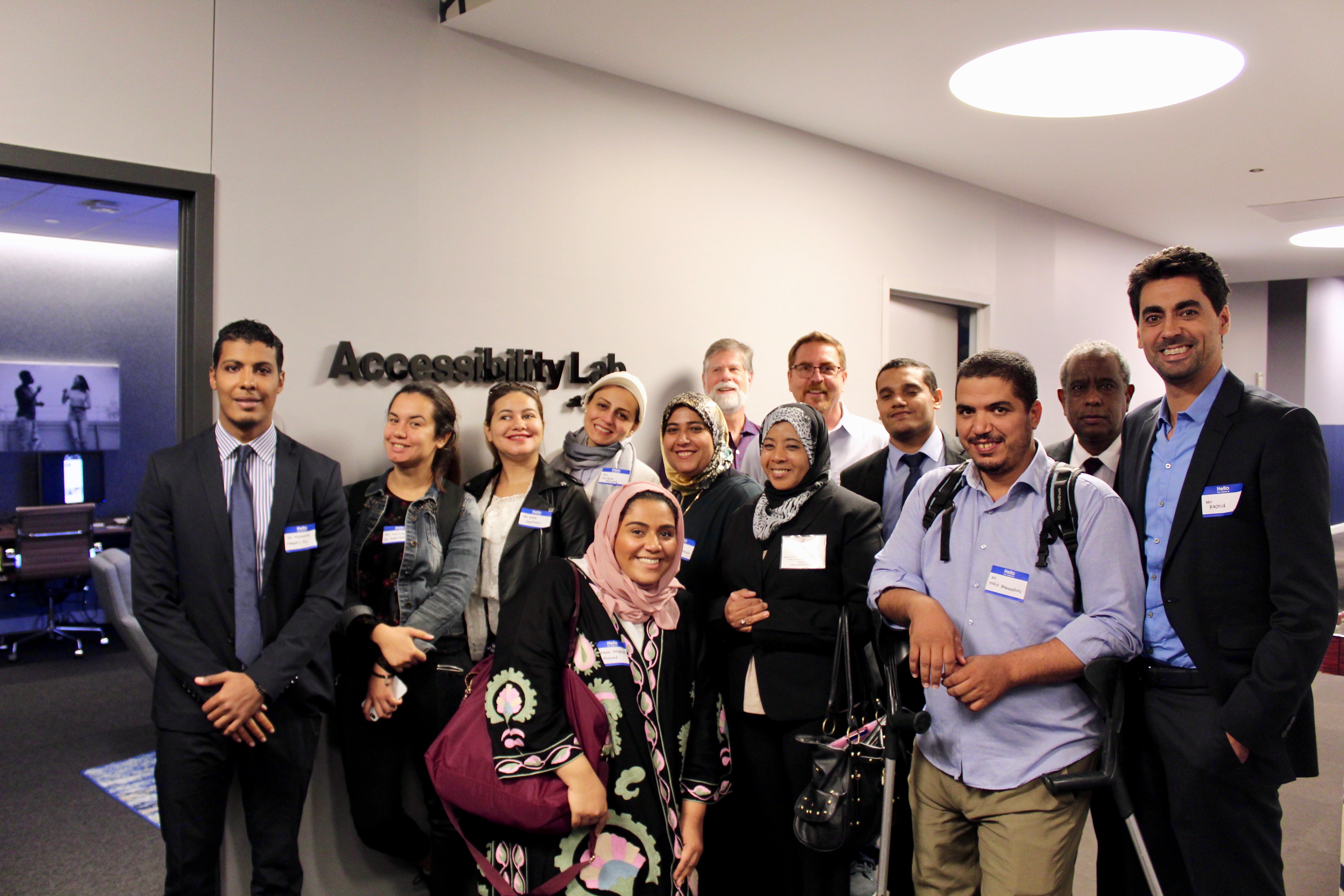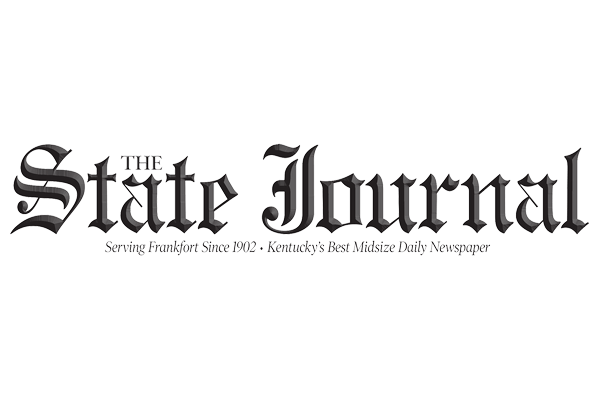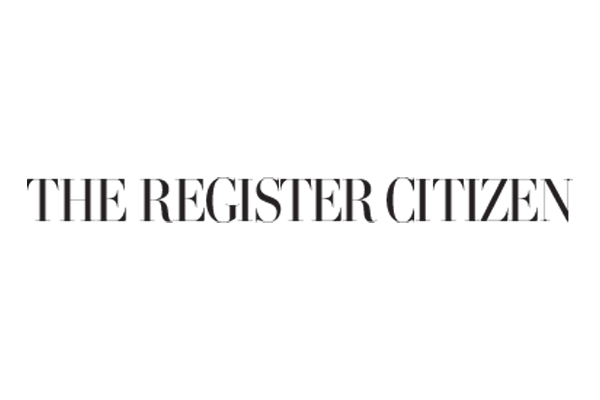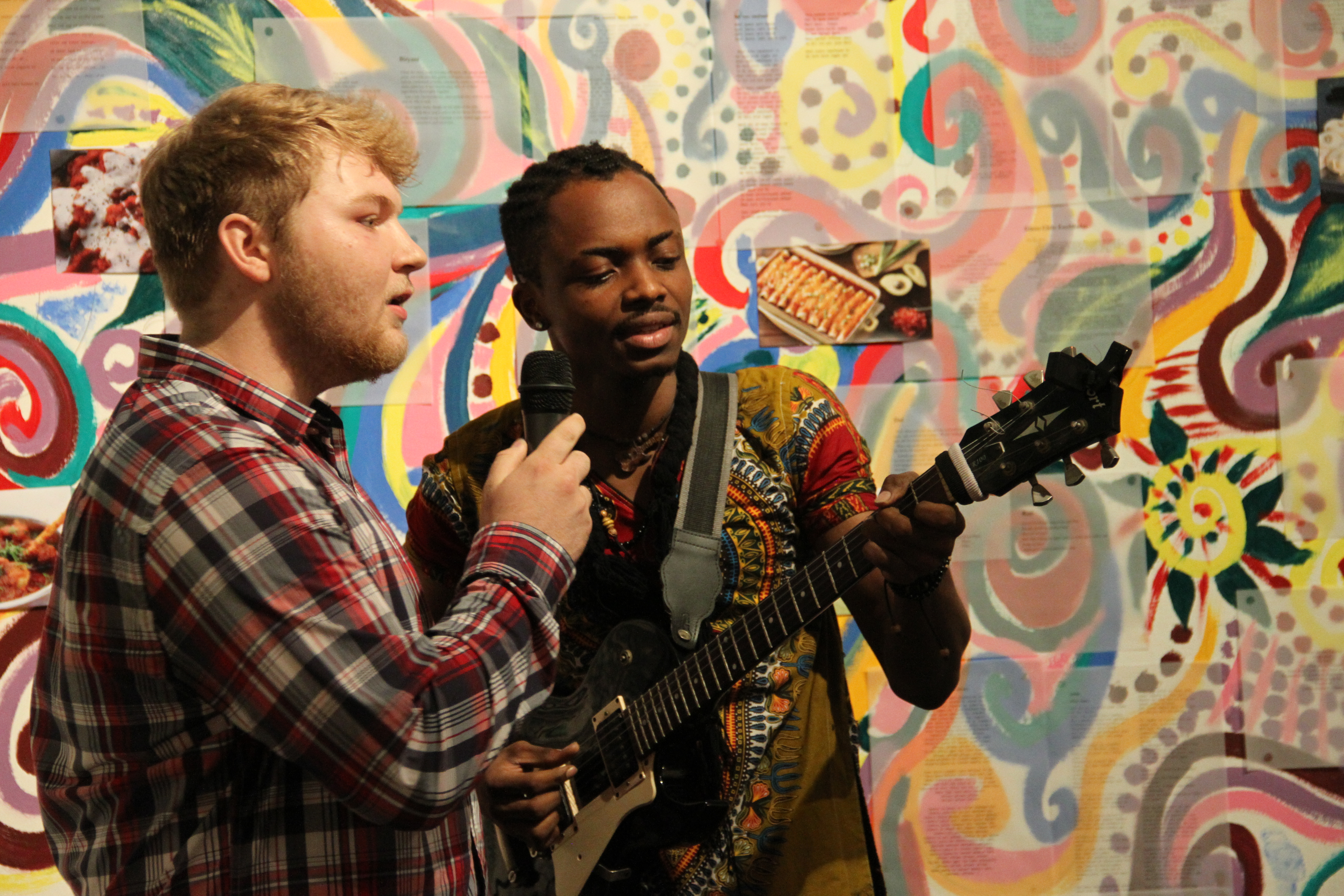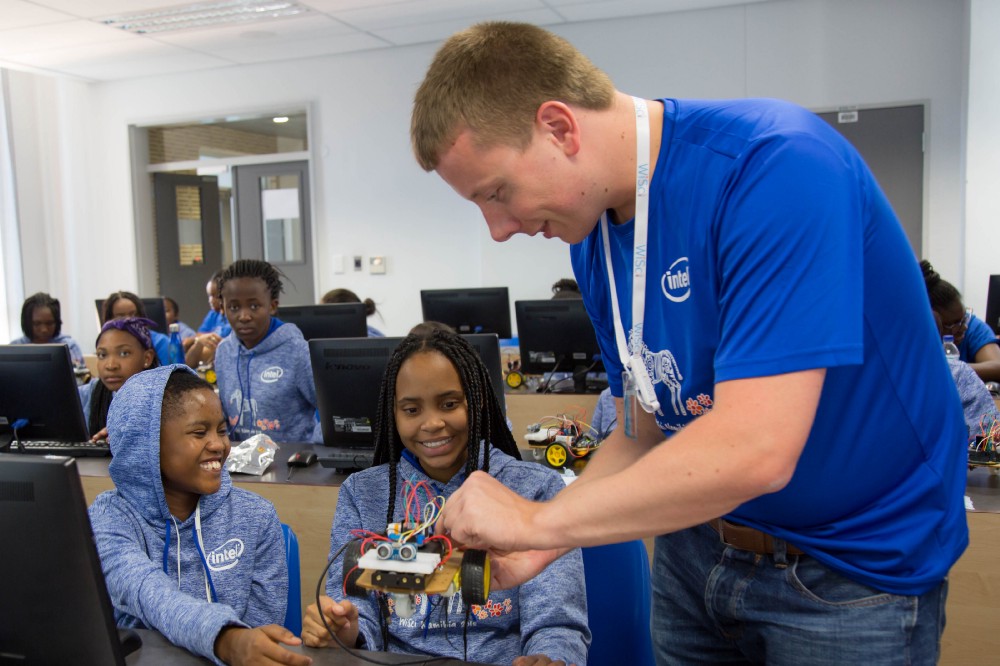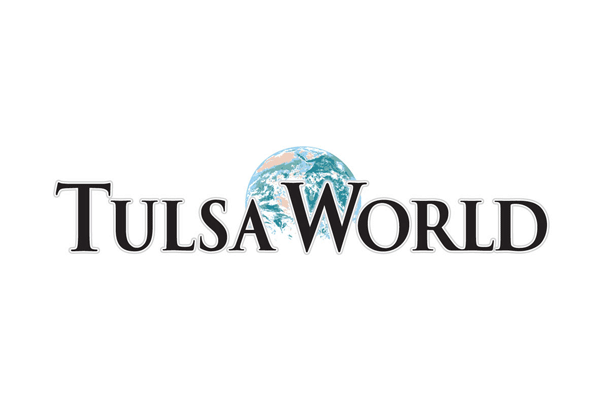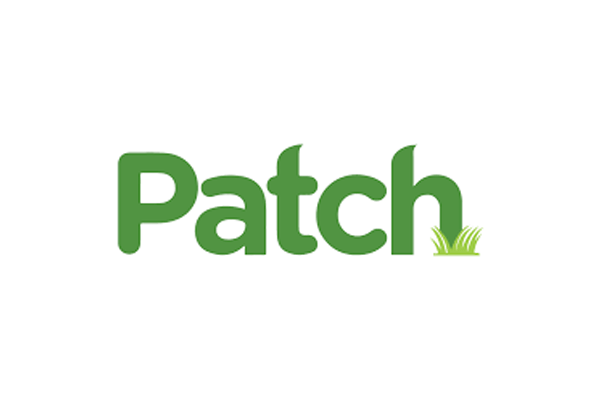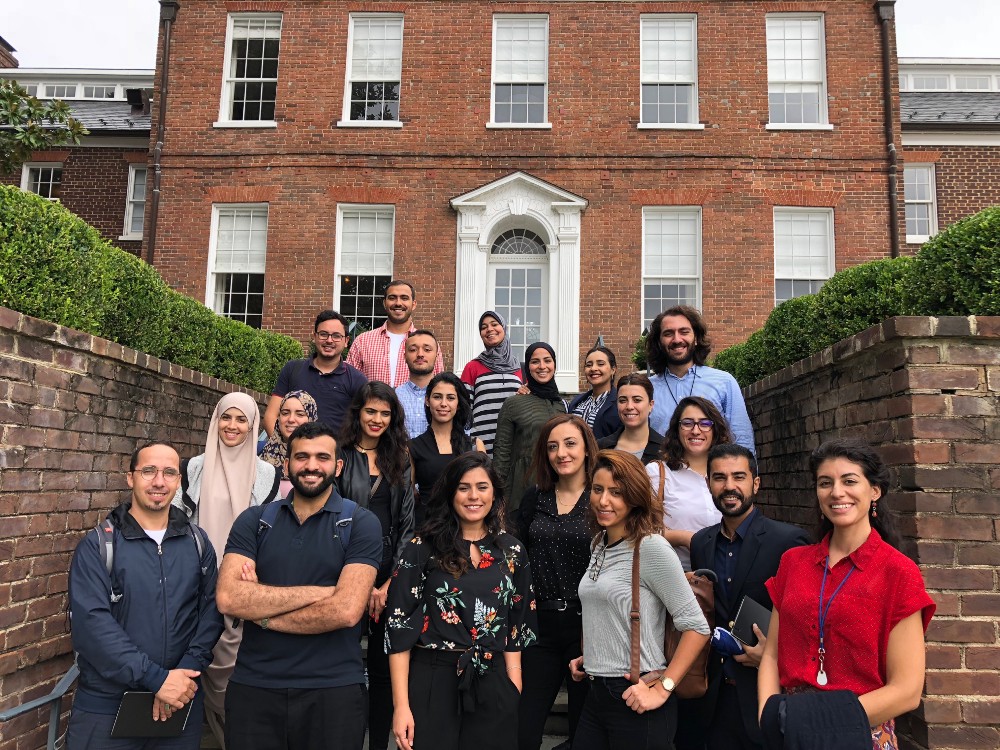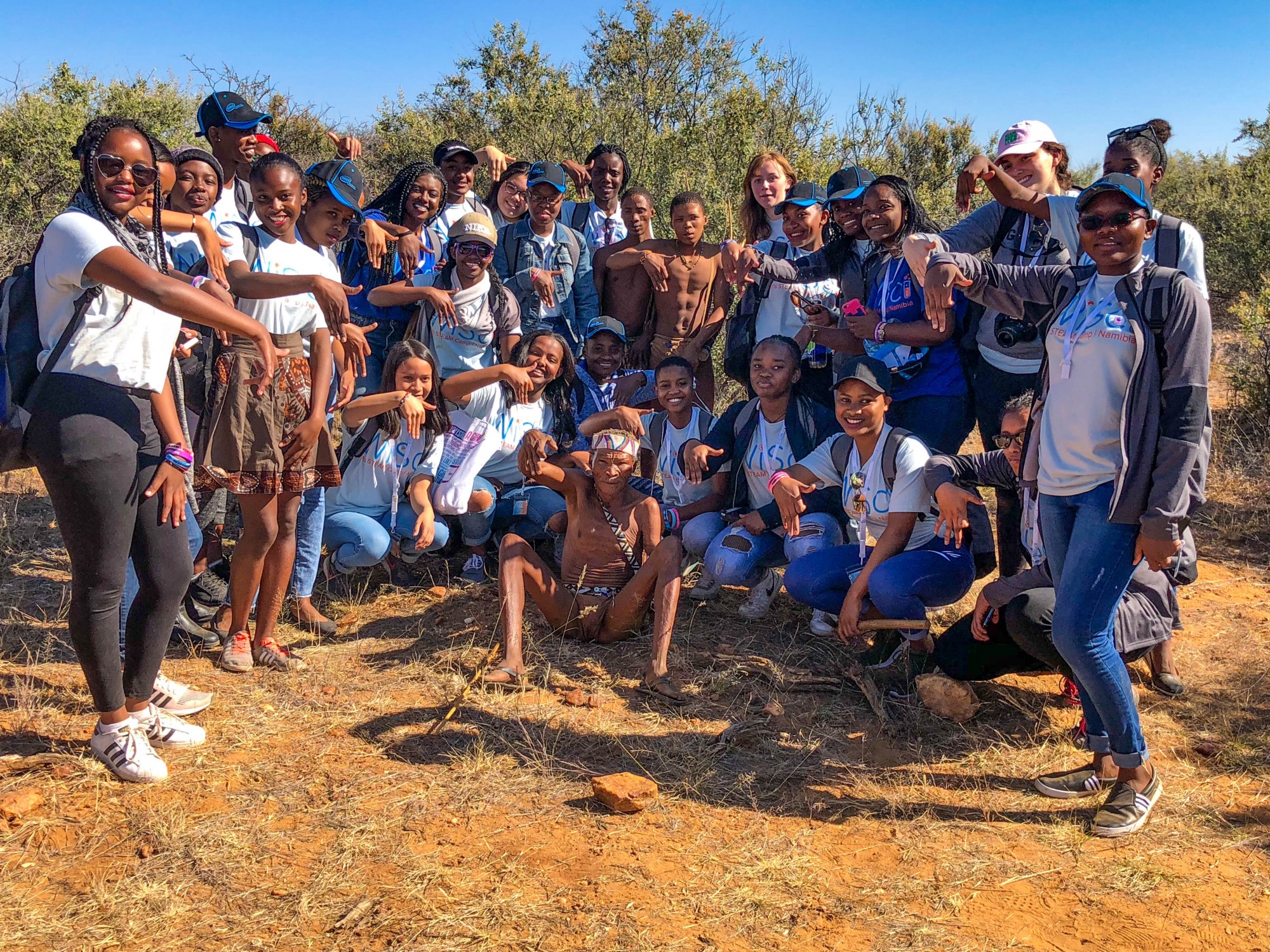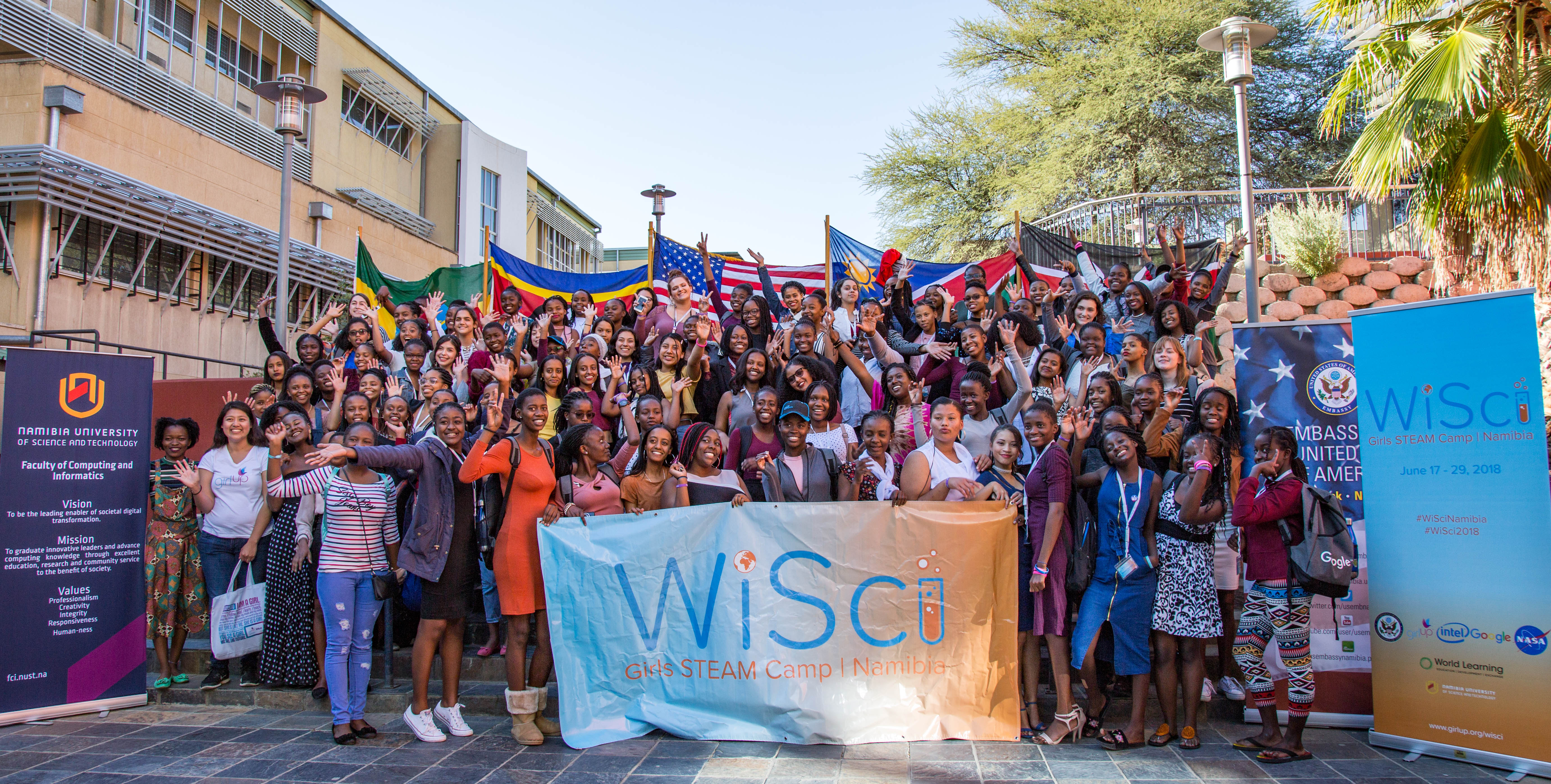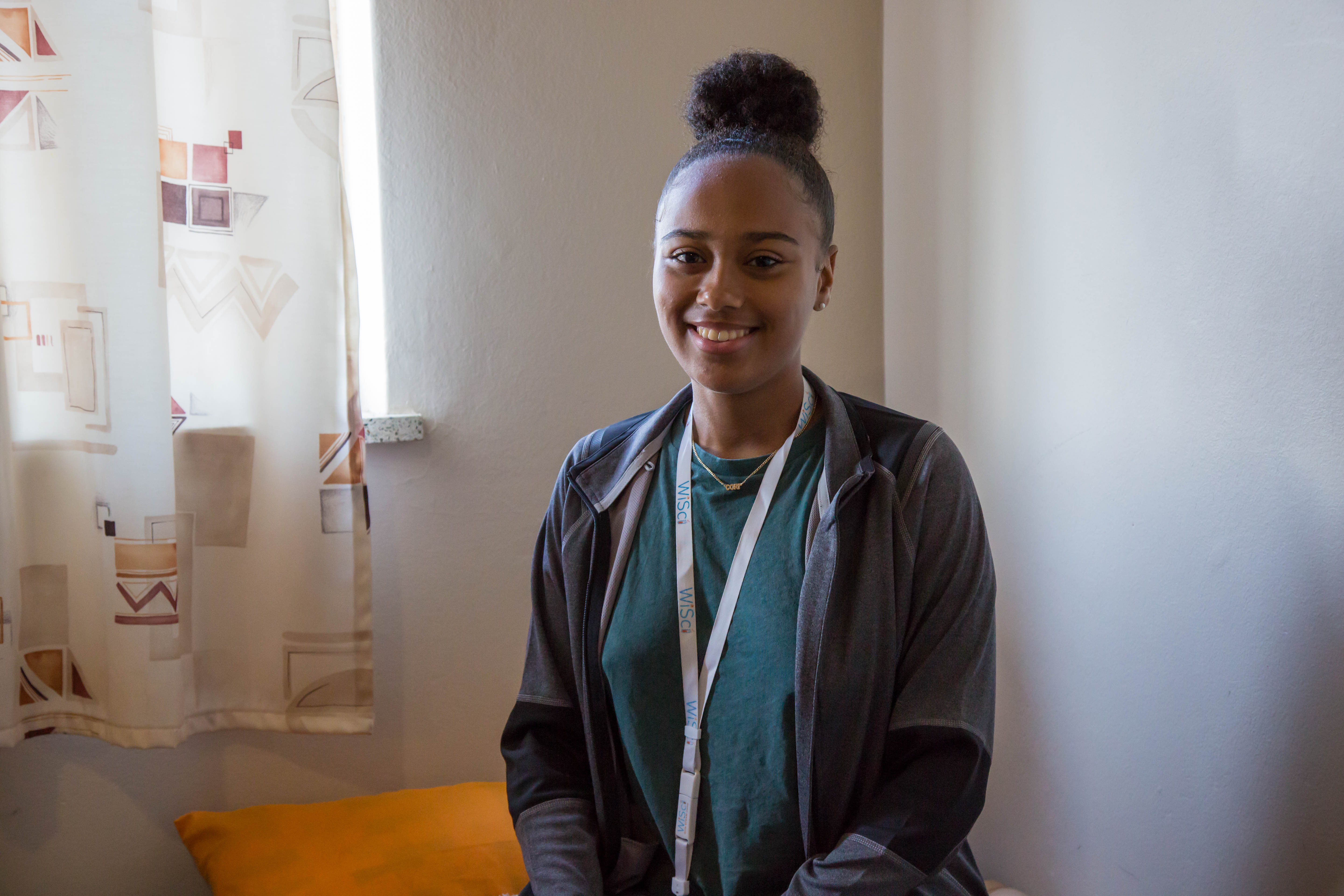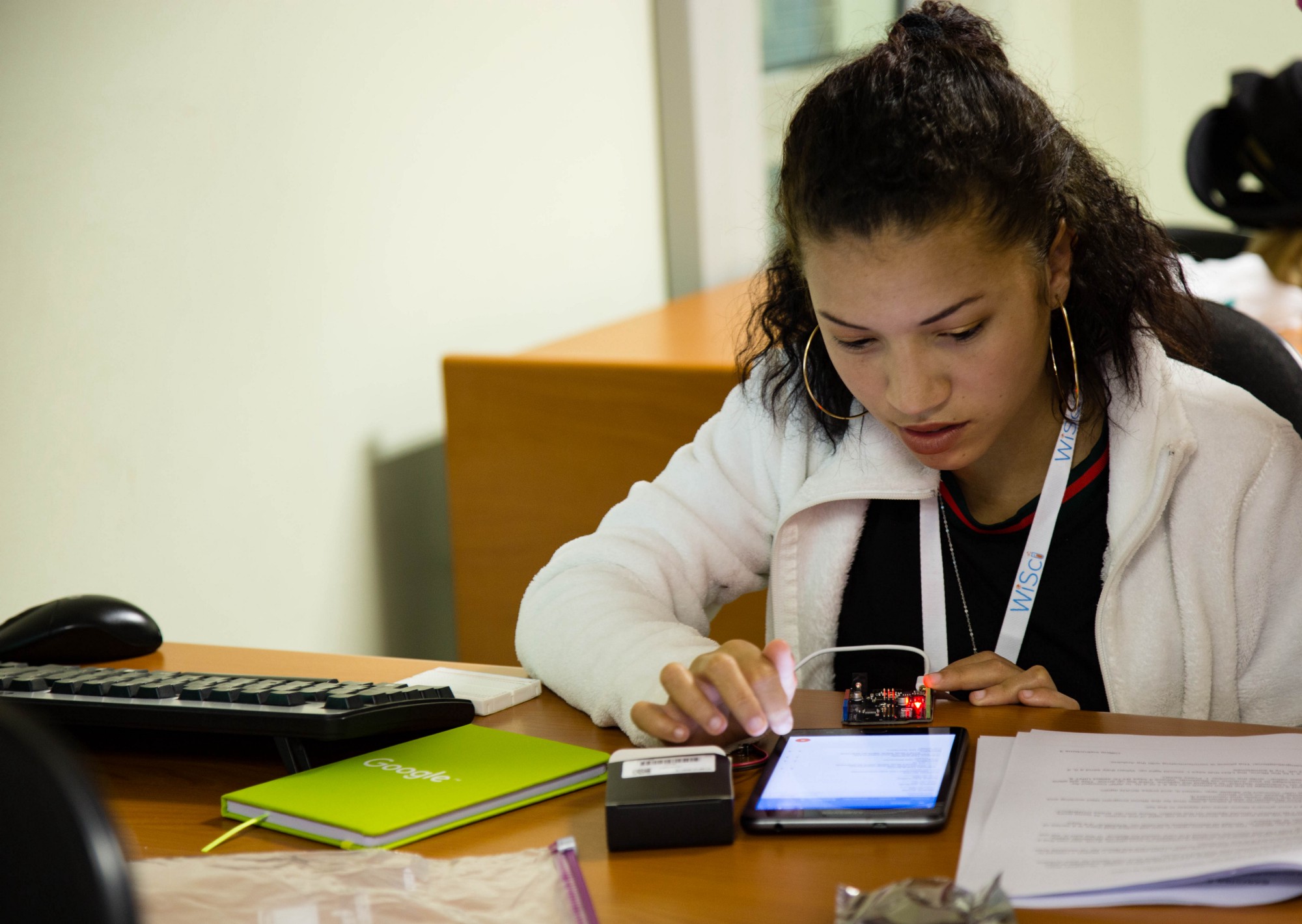-
What We Do
- WHERE WE WORK
-
About Us
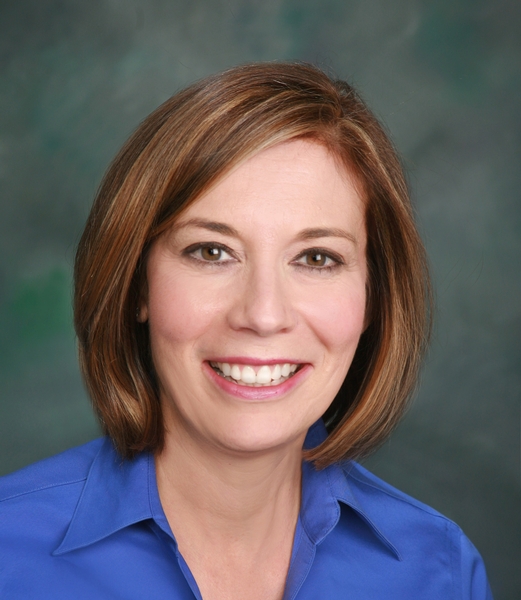 Welcome Message from Carol Jenkins
Welcome Message from Carol JenkinsFor more than 90 years, World Learning has equipped individuals and institutions to address the world’s most pressing problems. We believe that, working together with our partners, we can change this world for the better.
On my travels, I’ve had the opportunity to meet with many of those who have joined us in this mission. In Baghdad, we’ve trained more than 2,300 Iraqi youth who are already giving back at home. In London, our partners in the TAAP Initiative strongly believe that we are all responsible to practice inclusion. And in Vermont, our Experiment in International Living and School for International Training participants prove every day that they have the tools and the determination to change the world.
Please join us in our pursuit of a more peaceful and just world.
- Get Involved
Country: United States
Experience a New Culture Right Where You Live with World Learning
Executive Director of The Experiment Dr. Aaron Morehouse on US1 Radio
How an Exchange Helped One U.S. Student See the World—and Her Own Country
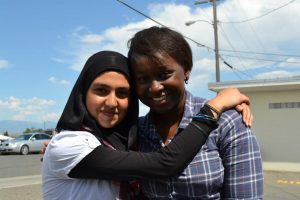
Stephanie Greene believes international education can change the world.
“I think it’s really important to expand your worldview, to realize the world is so much bigger than my neighborhood, my city, my state, and my country,” she says.
Greene learned this lesson firsthand the summer before her senior year in high school when she traveled around the United States alongside young people from Iraq as a participant in the Iraqi Young Leaders Exchange Program (IYLEP).
For 10 years, IYLEP has brought Iraqi high school and undergraduate students to the U.S. for four-week exchanges focused on leadership, peacebuilding, and civic engagement. Select students from U.S. schools also join the program, which is sponsored by the U.S. Embassy Baghdad and the U.S. Department of State with funding provided by the U.S. government and administered by World Learning.
In 2012, Greene was one of the U.S. participants, traveling with IYLEP to Brattleboro, Vermont; Bozeman, Montana; and Washington, DC.
IYLEP seemed like a perfect fit for the Chicago native. She was interested in other cultures, having traveled with her family and studied Spanish from an early age. She also attended a diverse high school where she worked to bridge cultural divides, including serving as her high school’s diversity chair, a student government position tasked with planning events to bring their community together.
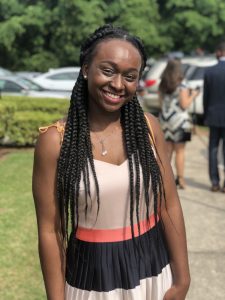
“I’d never met anyone from Iraq and I had never been to Montana or Vermont,” she says. “So, I was just really excited to meet new people who weren’t from Chicago and to learn a bit more about the world.”
IYLEP didn’t just teach Greene about the world; it changed the way she saw the world and her own place in it.
When Greene joined IYLEP, she didn’t know much about Iraq aside from the violence she had seen on the news. Through her new friendships with Iraqi high schoolers, she began to understand that their lives were far richer than that — and she also saw how their day-to-day lives were impacted by world events through things like government-imposed curfews. This, she says, was an important discovery.
“Now that I’m an adult, and as I grow in my career, it is important that I have a worldview because I could one day be making decisions that impact people in other countries,” she says.
The international exchange program also helped the teenagers dispel stereotypes as they learned about their differences. Greene notes that most of the students — both Iraqi and American — had never met or interacted with anyone from the other culture. One of the Iraqi students even told Greene that she thought all black Americans were gangsters because that’s how they were portrayed in movies.
“Here I am, a black person, and I’m not a gangster,” Greene says. “Now she has a different idea of what a black American could be or who they are. That’s cool.”
Greene applied this lesson later in life as she studied abroad in Spain and Mexico. As she was often the only black person in the small towns she visited, people would take pictures of her as she walked by them or ask about her braided hair. While she knew from experience that comments about her appearance can be rooted in racism, Greene realized these people were legitimately curious.
“One thing that I learned during IYLEP — and I’m grateful I learned this so young — is to take curiosity for what it is,” she says. “Assuming goodwill was a big thing I took out of IYLEP.”
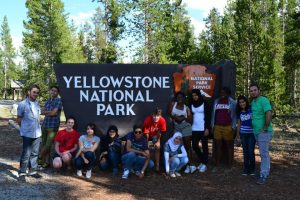
Finally, a homestay in Montana also taught Greene how geography shapes people. She spent two weeks living with a host family in Bozeman, where she and her Iraqi roommate studied sustainability, took bike rides, and even went hiking for the first time together. The experience stood in marked contrast to the urban environments they grew up in.
“For both of us, it was an eye-opening experience in terms of how people live — even in my own country,” Greene says. “Where you live impacts how you live, the things you do, and the interests you have as well.”
International education has continued to play an important role in Greene’s life in the years since IYLEP. As a student at the University of Chicago, she studied abroad twice and volunteered with the Young African Leaders Initiative, an exchange program that brings African civic, business, and community leaders to the U.S. for training. She’s also still in touch with her friends from IYLEP.
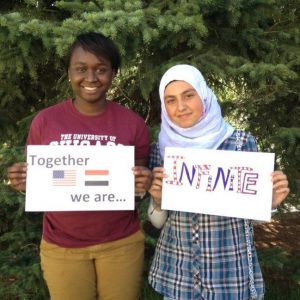
Now a consultant, Greene hopes to find work in the international education field so that she can give other young people the same experiences she had through IYLEP.
“My experience in IYLEP really shaped everything I did afterwards, in terms of how I interacted with people and my curiosity for the world,” she says. “I think if everyone was able to have that experience, and go into it with an open mind, the world would be a better place as we begin to understand people.”
She recalls a team-building exercise from her IYLEP exchange. The U.S. and Iraqi students were paired up and asked to complete the sentence, “Together, we are … ” Greene and her friend Baraa chose the word “infinite.”
“‘Together we are infinite’ — that kind of sums up what I’ve learned from IYLEP,” she says. “When we all work together, we can literally do anything.”
World Learning to Implement U.S. Department of State Program to Expand Study Abroad at U.S. Higher Education Institutions
The U.S. Department of State has selected World Learning to implement a program supporting U.S. higher education institutions (HEIs) as they develop and expand their capacity to administer study abroad programs for Americans. The Capacity Building Program for U.S. Study Abroad is a program of the U.S. Department of State with funding provided by the U.S. Government.
The U.S. Department of State is committed to expanding study abroad opportunities for American students to ensure they gain critical skills in support of our national security and economic prosperity. The Capacity Building Program for U.S. Study Abroad is directed by USA Study Abroad, the branch of the U.S. Department of State’s Bureau of Educational and Cultural Affairs (ECA) focused on supporting American students who represent the rich diversity of the United States for study or internships in a wide variety of international destinations. In addition to providing direct scholarship opportunities for U.S. students, USA Study abroad offers resources for higher education institutions to strengthen their own study abroad offices and programs.
“We are pleased to add this Capacity Building Program for U.S. Study Abroad program to our suite of initiatives aimed at supporting the study abroad community. We look forward to coordinating with World Learning to make this program available to a diverse array of U.S. higher education institutions looking to expand opportunities for American students to gain overseas experience,” said Heidi Manley, the chief of USA Study Abroad at the Bureau of Educational and Cultural Affairs. She notes that more information about USA Study Abroad’s free resources is available at www.studyabroad.state.gov.
“Studying abroad allows students to gain the knowledge and skills they need to thrive in an increasingly globalizing world,” said Lisa Posner Olocco, World Learning’s vice president for global programs. “This program will help U.S. higher education institutions expand access to study abroad opportunities and improve U.S. student mobility abroad.”
The program will broadly advance U.S. foreign policy goals in support of economic prosperity and national security. It will provide sub-awards to accredited HEIs to support initiatives that increase the number of U.S. undergraduate students studying and interning abroad, especially those from underrepresented groups, and diversify study abroad destination countries. Through these initiatives, selected institutions will help refine best practices in study abroad, including advances in programming, institutional partnerships, and technology.
Under the direction of ECA and with input from the U.S. higher education community, World Learning will create resources and implement workshops and trainings for the wider U.S. study abroad community to showcase these best practices and continue expanding study abroad opportunities on campuses across the United States.
For inquiries, please contact Amy Fisher Bruey at [email protected].
Exploring Maryland’s Maritime Heritage By Living It
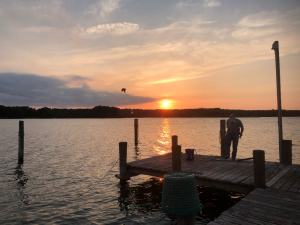
The Waterman’s Wharf exhibit sits isolated in the middle of a dock on the far side of the Chesapeake Bay Maritime Museum grounds. The museum, which is spread along the shore of the Chesapeake Bay in downtown St. Michaels, Maryland, is primarily made up of open-air exhibits like this one.
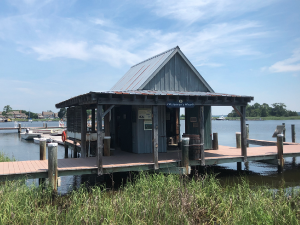
I walked into the small wooden structure and found myself in a setting that was profoundly familiar: I could hear the breeze rustling the tall grass that filled the shallow water just outside the shack. I noticed the open crab pots on the ground, the tubs full of blue crabs in various stages of molting, and the old photos of watermen on the walls.
Just a few days earlier I was pulling a crab pot to the surface from the side of another dock. I was scooping “peelers” and “busters,” both names for stages of blue crab molting, out of climate-controlled tubs. I was on a Skipjack shaking hands with men just like the ones in the photos.
I realized then that I had not only learned about the cultural heritage of the Chesapeake Bay, I had experienced it for myself.
In June 2018, I spent three weeks traveling with Saving What Matters, one of six projects that I was working with on World Learning’s Communities Connecting Heritage program. This program brings together U.S. and international organizations and participants to explore cultural heritage. Participating organizations partner up and submit proposals for unique cultural heritage projects they will carry out together through both virtual and in-person exchanges. Selected partnerships receive funding and undergo a training course in which World Learning helps them build their capacity to manage such an exchange program.
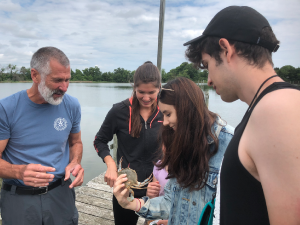
Our partners on Saving What Matters were Coastal Heritage Alliance, an organization devoted to preserving traditional fishing family culture based in St. Michaels, Md.; and Cultural Heritage without Borders, an organization dedicated to preserving cultural heritage in areas affected by conflict in Sarajevo, Bosnia and Herzegovina. They developed a project exploring their cultural heritages by way of digital storytelling. On the Bosnian side, they focused on a special kind of pottery that only one man in one village still knows how to make. In Maryland, the participants focused on the people that still live traditional watermen culture in the Chesapeake Bay.
As part of the Saving What Matters project, a group of Bosnian students from the University of Sarajevo and American students from Goucher College in Towson, Maryland, first developed digital stories of their local cultures over the course of a six-month virtual exchange. They then participated in two in-person exchanges in which they visited one another’s countries, exploring their partner’s cultural heritage.
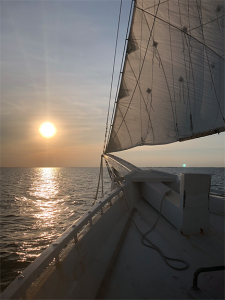 One critical element of the project was its emphasis on experiential learning. As cornerstone of World Learning’s teaching philosophy, Communities Connecting Heritage teaches our partners about the importance of experiential learning throughout their capacity building course.
One critical element of the project was its emphasis on experiential learning. As cornerstone of World Learning’s teaching philosophy, Communities Connecting Heritage teaches our partners about the importance of experiential learning throughout their capacity building course.
Experiential learning encompasses both learning by doing and learning by processing. In the experiential learning process, a participant first takes part in an activity, then is encouraged to reflect on the experience, taking time to understand what actions they took and how it affected them. Next, the participant begins to analyze the activity, exploring how it connects to their past experiences, and finding deeper meaning in it for themselves. Finally, the participant applies what they’ve learned through that experience throughout their lives.
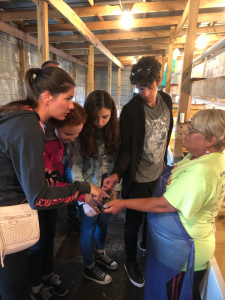 While accompanying Saving What Matters in Maryland, I saw our partner, Mike Vlahovich of Coastal Heritage Alliance, emphasize experiential learning every step of the way. Instead of spending all of our time in museums, though there were some wonderful ones, we ventured outside to learn from the people who still live their heritage every day.
While accompanying Saving What Matters in Maryland, I saw our partner, Mike Vlahovich of Coastal Heritage Alliance, emphasize experiential learning every step of the way. Instead of spending all of our time in museums, though there were some wonderful ones, we ventured outside to learn from the people who still live their heritage every day.
We visited facilities where a staff of just two or three people work from early in the morning adjusting sprinkler intensity for tubs of blue crabs to simulate the natural conditions in the bay that encourage molting. Harvesting crabs right after they shed their old shell is how we get soft shell crabs, and the process requires great attention and care. We helped clean and paint the deck of a Skipjack, the traditional boat used for oystering in the Chesapeake Bay. We took a boat around Smith Island, observing firsthand how rising sea levels are eroding the shores of this small group of isolated islands. Instead of being told about the traditional way of life in the Chesapeake Bay, our participants were able to feel, smell, taste, hear, and see how these communities are preserving the maritime cultural heritage of the bay in their day-to-day lives.
Mike consistently emphasized the importance of not enclosing cultural heritage in a museum, but celebrating it and preserving it where it already exists. Academically I understood this, but I did not fully grasp what it meant until I was walking around the Waterman’s Wharf exhibit in the Chesapeake Bay Maritime Museum.
Let me show you what I realized. Below are a few sets of side-by-side photos. The photos on the left are what I saw in the museum exhibit, while the photos on the right are what those exhibits sparked in my memory from our time spent experiencing maritime cultural heritage:
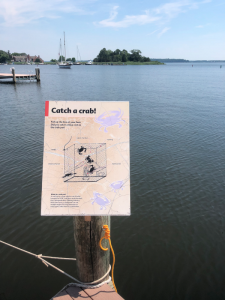
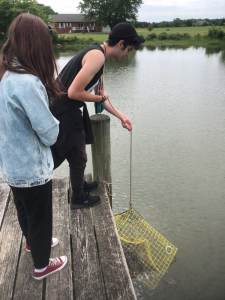
Crab pot simulation at the museum (left) versus pulling up a crab pot on the shore of the bay (right).
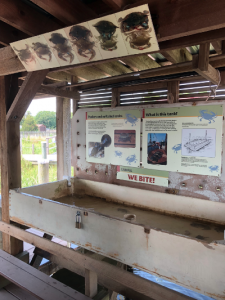
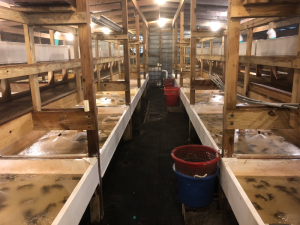
Sample soft shell crab facility in the museum (left) versus a real facility on the Eastern Shore (right).
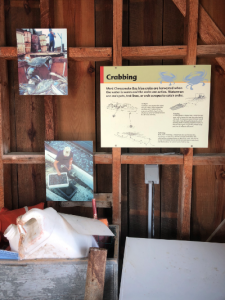
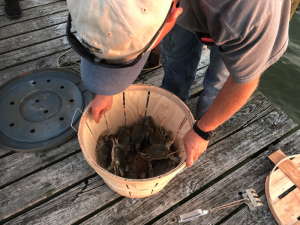
Old photo of watermen crabbing in the museum (left) versus a local tradition bearer of watermen culture holding a basket of blue crabs (right).
This project challenged participants to think about cultural heritage as something to be preserved where it currently exists. They went beyond the classroom to see the world as it is. The participants of this program not only learned about the culture of the Chesapeake Bay, but had the privilege to walk alongside local tradition bearers for two weeks and experience it for themselves. My colleagues and I hope they will take the lessons they learned and reflected on along the Eastern Shore and apply them in their lives as they continue to celebrate and preserve cultural heritage back home.
They seem determined to do so. “My exchange program showed me how much heritage is being lived in the world of today,” says Jasmina Ferhatovic, a participant from Bosnia and Herzegovina who came to the Eastern Shore. “We are part of this heritage and its future. That is why heritage preservation is important, for both the people that live it and the people that study it.”
Sean Mooney is a program officer at World Learning.
Dallas Black Dance Theater Selected for Communities Connecting Heritage Program
Breaking Down Barriers to Employment for People with Disabilities
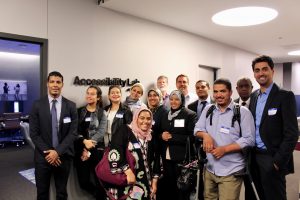
In Salt Lake City, Utah, nine professionals from the Middle East and North Africa experienced what inclusion of people with disabilities means in a state known for outdoor adventure. During their stay, they visited a rock climbing gym that offers adaptive equipment like harnesses and hand grips and climbing partners. The gym is not a separate facility just for people with disabilities but a place that brings a community of people of all abilities together.
These professionals were in the U.S. for three weeks as participants of the International Visitor Leadership Program (IVLP), an exchange program that brings professionals from a variety of fields to the U.S. to cultivate relationships and share experiences and expertise. Sponsored by the U.S. Department of State with funding provided by the U.S. government and administered by World Learning, this program focused on disability rights. The group saw how the Americans with Disabilities Act has created accessible spaces since it was enacted 28 years ago. They also learned about the progress that still needs to be made to break down barriers people with disabilities face in finding employment.
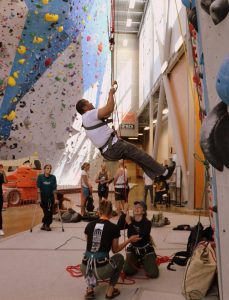
Facilities like the rock climbing gym can make a difference. Mohamed Elbadry, one of the IVLP participants, is a disability rights activist and athlete in Egypt. He sees sports as a way to express himself and increase his confidence. His participation in sports has also helped change others’ perceptions of what people with disabilities are capable of doing.
Changing these perceptions is key to increasing employment among people with disabilities. This October, the United States celebrated National Disability Employment Awareness Month (NDEAM), an effort led by the U.S. Department of Labor to raise awareness of the employment needs — and the capabilities — of people with all types of disabilities. Everyone can contribute their unique talents and skills to a job if given the opportunity.
During the IVLP experience, Elbadry and his colleagues learned many ways to address this worldwide employment gap between people with and without disabilities.
Education is an important place to start. The group visited different schools and universities to observe the support and accommodations they provide students with disabilities. Group members were particularly impressed with The College Experience, a program through which students with disabilities live independently on a college campus in Albany, New York. A partnership between the nonprofit Living Resources and the College of Saint Rose, the program helps youth with developmental disabilities take classes and transition to the workforce. The program showed the group what meaningful employment is possible when people with disabilities are given accommodations and assistive technology.
For Elbadry, the program provided a helpful example of how organizations can build bridges between the disability community and employers, which in turn helps employers understand why they should hire people with disabilities. He hopes to apply what he learned from this IVLP experience when he returns to Egypt. “I see that we need a center in each field of work or in each region that can help those who need training,” he says. “Every state [in Egypt] should have a team responsible for connecting with organizations and companies to ensure the employment of people with disabilities.”
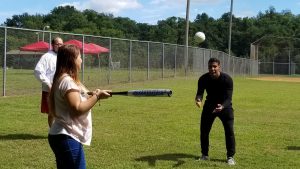
Hafid Babazahou, another IVLP participant, is president of an association of people with disabilities in Morocco. He learned from these meetings the importance of data collection. People with disabilities have been found to have higher attendance and a lower turnover rate on average than people without disabilities. Sharing this information and specifics about low-cost accommodations and assistive technology support can show potential employers why it makes good business sense to hire people with disabilities. Employment data can also demonstrate how to create jobs that play to the skills and strengths of people with disabilities. When employers understand facts about working with people with disabilities, it is possible to shift their attitudes and open doors to create a more diverse workforce.
Professional exchanges like the IVLP can spark new ideas and build connections that advance international disability rights. These meetings across the U.S. motivated participants to continue their advocacy for disability rights upon returning home.
These exchanges also remind the U.S.-based hosts, interpreters, and program administrators of the progress we have made over the years and what more needs to be done to change attitudes toward people with disabilities. By working together and sharing our best ideas, we can bridge the employment gap in communities and countries across the world.
— Amy Reid, Program Officer
As NDEAM draws to a close, this is a time of reflection for individuals and organizations across the world. Consider: How are you fostering a more diverse and inclusive workforce? Are people with visible disabilities recruited, hired, mentored, and advanced? If you need ideas for increasing disability inclusion in your organization, check out the Department of Labor’s National Disability Employment Awareness Month resources. Put up a poster, arrange for a disability education program, and advertise employment opportunities with your local Center for Independent Living or Rehabilitation Services Program. For international recruitment, advertise with Mobility International USA.
HeartBEATS Inspires Troubled Youth Through Beat Making
Norwalk Nonprofit Brings Together Students in Connecticut and Nepal under Communities Connecting Heritage Program
Communities Connecting Heritage
Why is Mentorship Critical in STEAM Fields? Pros from Google, Intel, and NASA Weigh In
It can be daunting to imagine the future if you’re a girl pursuing a career in a field where there are few, if any, other women to look up to as role models and mentors.
As World Learning Inc. President and CEO Carol Jenkins noted in an op-ed for the Council on Foreign Relations, women are entering bachelor’s and master’s degree programs at the same levels as men, but there are leaks in the pipeline: women are far less likely to pursue doctoral degrees and other advanced opportunities.
But recent studies show that having female mentors — and more female peers — can turn that phenomenon around.
Creating those mentorship opportunities is one of the many goals of WiSci, the Women in Science Girls STEAM (Science, Technology, Engineering, Art & Design, and Mathematics) Camp. Implemented by World Learning, the camp brings together high school girls to develop their leadership potential and engage in an intensive STEAM curriculum devised and taught by professionals from WiSci partner organizations Google, Intel, and NASA. During nightly mentor hours, those professionals also advise the girls on their academic paths and careers.
At this year’s camp, hosted in Namibia, World Learning spoke with these mentors to find out why they believe mentorship helps girls stay in STEAM fields. Check out what they had to say in the following video clips and Q&As:
Jennifer Francis
Technology Development Environmental Health and Safety Engineer
Intel Corporation
How have your experiences been with the girls?
They are really cool. They give us energy when we are tired. It’s exciting to see them excited about learning. I also think it’s really exciting to see those who have that basic interest in chemistry or biology. It is that drive of being interested in science and learning and problem solving that really engages them in the other parts of STEAM. So that’s been really cool.
Why do you think that mentorship is important, especially for girls in STEAM fields?
Mentorship is really important because although you go to school, to actually go from sitting in a classroom getting that information to now meeting and talking to someone who does that as a part of their day-to-day life is really important. It factors into something I wholeheartedly believe in, a concept that I’ve been doing for many many years, called SEE: Science and Everyday Experiences.
By being a mentor, I represent SEE because this [camp] is an application of [the STEAM subjects] you may be interested in. And the girls may not get that. And even if they do get it from their teachers or from other professors, it’s always good to diversify and get that same experience and exposure from other people.
Onome Ofoman
Software Engineer
Google
What was your experience of mentorship when you were coming up in this field?
I didn’t have too much exposure to engineering in high school. I had lots of math and science classes, but I didn’t really know what engineering was. I just knew it was a prestigious career. But I had a lot of teachers who encouraged me to apply to different competitions and would help me study after school to make sure I was prepared. That really stayed with me.
I think one of the reasons that I’ve been able to get to where I am today is because of the access and opportunity I had through those competitions, as a result of these teachers spending extra time to prepare me. I can see the direct connection between mentorship and success in my life, so I try to to give back as much as possible.
What have your impressions been of the girls so far?
They are just great. I have not taught this age group before. I usually teach either younger students, middle schoolers, or developers that are already working. So I thought they would be really rowdy. But they’ve been really, really excited to be here and excited to learn.
A lot of them are focused on what they want to study in the future, what they want to do with their life, and how they can help bring change to the world. So they’re asking really interesting questions like “How did you get to Google?” or “What should I be doing to get to a university or to figure out what I want my career to be?” or “What kind of access to scholarships are there?”
I went to the U.S. on a scholarship, so I got a lot of questions about the whole application process to schools in the U.S. A lot of the girls are very future-focused, and I’m very very happy to see that.
Do you think that there is a connection between mentoring and being able to retain women in the industry?
I definitely think there is. And one of the most important things that companies do — and those that don’t should be doing — is have resource groups. At Google, we have a women engineers group. These resource groups are very useful for helping share knowledge that people who have gone through the ranks have accumulated and can share with junior engineers.
What final advice would you give girls?
What I say all the time is just don’t limit yourself. Never think that something is out of reach. Just always try. A lot of the opportunities I’ve had is because I tried. And at first it was other people telling me to try — mentors, my parents, saying, “Apply for this,” or “Go to this competition.”
And as you try things, you see that you’re good at some things [and] maybe not so good at other things. All that information is useful. It’s useful to know what you’re good at. It’s also useful to know what you’re not good. But also just trying things [is useful]. It’s a muscle so the more you do it the easier it is. So just always try, never limit yourself.
Emily Adams
Regional Science Coordination Lead for the Eastern Southern Africa Hub
NASA SERVIR Science Coordination Office
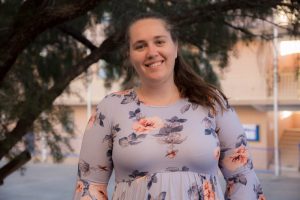
What interested you in coming to the camp?
It’s become even more obvious over the past couple of years, even six or eight months really, how women have been discriminated against in STEM fields. I mean, it’s obvious that it’s a male-dominated field, but the discrimination is a much bigger problem than I think anybody had really realized.
I didn’t necessarily face a lot of the same problems that some other women have faced, but I did have a little bit of discrimination through my master’s degree and it really empowered me to want to make the science fields better for the next generation of young women. I had so many opportunities thanks to my parents and things like that, and I think this camp is a great opportunity to expose young women to new science opportunities and empower them to pursue STEM careers if that’s what they choose to do.
What was the discrimination you faced?
It was not anything aggressive by any means. I give the benefit of the doubt that it was unconscious, but in a lot of cases I was the only woman in my lab and it was my job to clean, always. So there’s just small things like that where I was being pushed toward fulfilling a stereotype rather than being treated as an equal. It’s not necessarily a huge thing, but even something like that can be really detrimental to a woman’s career. Cleaning takes away from my studies, takes away from my research, etcetera. It can build up.
What was important to you to impart to the girls at mentor hours?
I think what’s amazing right now is we’re so connected. The world is so connected and there are so many resources available to young women online and through different projects like this. I really encourage them to seek out these opportunities and build their repertoire of experiences.
One of the big reasons why I am here today is because I took a lot of chances on experiences that maybe were a little bit outside of my comfort zone — sometimes a lot of outside of my comfort zone — but they exposed me to new skills and new things that I was so excited to keep exploring. It’s a huge deal for a lot of these girls to come all the way to Namibia to learn about STEM. It’s an experience like nothing else. And so I really encourage them to use their online platforms and communities to continue learning.
Why are mentorship opportunities important in your field?
Obviously there are very few women in STEM fields, which means we have very few people to look up to and that we could easily learn from. There are a lot of male allies that have been in my life as well, but sometimes you feel most comfortable looking up to somebody like you. I would like to continue to pass that relationship down to the next generation and encourage women to continue to pursue STEM and at least give them a positive role model to look up to throughout their career.
Robert O’Connor
IT Factory Automation Engineer
Intel Corporation
You’ve been participating in mentor nights. What kind of questions are you getting?
Before this week, we did mentoring with the counselors rather than the girls. We had them in for two sessions, we went through our projects with them in the first session and then they asked us if we could have a second one where we talk about our careers, how we started — I was a swimming teacher and a lifeguard — and how we progressed in each step along the way to where we are now and where we want to go in the future and the roadblocks [we faced]. And [they also asked for] recommendations for how they could potentially get jobs both in their own countries and abroad. So that was very interesting.
Now in week two, the girls are all very focused on their final week project. They want to win. So they’re all coming up to us and are like, “Here’s my idea,” and they’re really pushing it and want all the tweaks they can get. And then they’re like, “Now how can we present this so it comes across well to the judges?” So essentially our mentor hours for this week are focused around their camp projects and how they’re merging our work, Google’s, and NASA’s together for the final project.
What has been your overall experience at WiSci?
I just think it’s been brilliant. A lot of people in Ireland that I spoke to when I told them I was going on it said, “Oh, I never applied for it because I didn’t think I’d get it.” I’m male, so I saw this as women in science and I knew straight away that it would have to have a heavy female-weighted team just so the girls could see themselves in it.
But that didn’t turn me off it because I thought you also have to have men there so that it’s not it’s not a divide. Theresa (another Intel mentor) has years of experience, she’s a brilliant manager, so now she’s leading a team of both men and women, and I just think that comes across a bit better than a woman leading a female team. It shows that are all working together. It’s not men holding women back — maybe one day it was — but we’re all trying to drive together into the future. [These girls] can have support no matter where they are and no matter what jobs they go into.
Jackie Rajuai
Geoprogram Manager
Google
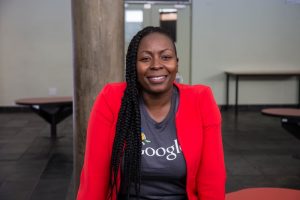
Why is it important to teach STEAM skills to girls?
I grew up in Kenya, and no one ever came to speak to me about what kind of options there are in life career-wise. My parents always said you can do anything you want to do as long as it’s engineering or science, but I didn’t have a grasp of what those things were. So when I was selecting what I was going to do in university, it was just based on what my parents said.
At that age, given how impressionable you are, sometimes you select things based on what your friends say, but if I had the opportunity to talk to people who actually work in the industry, that could have changed a whole lot of things. Luckily I ended up somewhere I really love, but it’s important to me that these girls meet people who actually work in these industries and get a sense of what opportunities are available to them in life.
Did you participate in mentor hours?
I did. That’s been interesting as well. One girl said she always had a passion for structural engineering and construction, but now that she’s met us she’s like, “Okay, I never thought this would be considered engineering as well” — because it’s not things you physically see. So it was interesting to see how options have opened up [for her]. She has a few years to think about it. And the benefit is that in the first two or three years of engineering, the basics are the same. It’s very math-heavy. So I asked her to focus on building the foundation, be comfortable with math and things around that, that’s going to help build you up in the future.
[I also spoke] to girls who really enjoyed the camp and want to be able to do this in the future but they don’t have the monetary ability. So I was talking to them about scholarships. Some girls didn’t know those things would be available to them. That’s been really cool.
What are your thoughts on how to break down the barriers for women entering STEAM fields and where this camp fits in with that?
I think a big chunk of it is funneling as many people as you possibly can into those fields. Because being one of the few women in the industry is difficult, but you find solace in groups, right? Even if you’re like five [women], you know you’re not in this by yourself. So having more women come into the field is going to change the work environment.
We know from the top to the bottom there’s lots of males in leadership, so even how these companies are run or basic things like benefits or even the terms we use are all very male-oriented. So if there’s more females in the company, people are like, “Oh, that’s something we never thought about.” But then still sometimes companies struggle because it’s like, “Even if we change all this, we still have very few women, so why are we changing this existing structure that’s been working for just 1 percent?”
Right? So the more we funnel people into the industry, the more it’s also going to change the work environment.
With initiatives like this one, do you see a difference in how they funnel people into the industry?
Definitely. At the end of the day yesterday, I was talking to some of my colleagues who happen to be from Kenya as well. We were saying it would be really good to keep tabs on these girls because it would be nice to ensure that bond carries on. We don’t want to have passed on all this knowledge and opened up their eyes and then just drop it. So just keep tabs on them if they get into a university. For example, in Google we have a university outreach team. If some of these students end up in a STEAM field, how do we get them to be interns in the company and maintain that relationship?
[We want to] just keep holding their hands because it’s tough. As I mentioned, I went to school in Kenya. In my engineering class, we were four girls out of like 35 guys. So before they even get into the field, [when they’re] studying it in school, we just have to try and keep holding their hand and telling them it’s fine, it keeps getting better. We’d like to keep that pipeline going.
Any final advice?
I think just go for your dreams, right? At the end of the day, I understand we have lots of barriers, whether it could be economic barriers or access to opportunities or things like that. I never thought going to school in Kenya that I would get hired by Google and be on the same team as people who went to Stanford and different places, but you’re on the same team and you’re working on the same product for users for the same goal. Sometimes we are our own challenge. You say like, ‘yeah, but I don’t have this, but I don’t have this.’ But just go for what you want in life. Anytime an opportunity comes up, take it because you never know. You never know where it’s going to lead, you never know who you’ll meet, so just follow your dreams. It can be hard sometimes, but at least you know at the end of life, I gave it my best. I tried.
Women in Science (WiSci) Girls STEAM (Science, Technology, Engineering, Art & Design, and Mathematics) Camp is a private public partnership (PPP) between the U.S. Department of State’s Secretary’s Office of Global Partnerships, UN Foundation’s Girl Up Initiative, Intel Corporation, and Google. In 2018, the camp brought approximately 100 high school girls from the African continent and the U.S. together for 13 days in Namibia to explore the STEAM fields and access mentorship opportunities and leadership training.
Participant Gains Insight into the Future of India and the U.S. through Exchange
Creative Connections Receives U.S. Department of State Grant
42 Young Professionals Join World Learning’s Leaders for Democracy Fellowship
World Learning welcomed 42 young leaders into the third cohort of its Leaders for Democracy Fellows (LDF) Program in July 2018. Over the course of 12 weeks, these fellows will develop and hone skills that are critical to making a difference in their communities.
LDF, which is funded by the U.S. Department of State’s U.S.-Middle East Partnership Initiative (MEPI), is a leadership development program that seeks to enable early- and mid-career professionals from across North Africa and the Middle East (MENA) to solve local challenges. The program is comprised of two identical tracks, a U.S.-based program for English speaking participants and a program based in Lebanon for Arabic speaking participants.
Abdelaziz Noujoum, a 2018 fellow in the U.S.-based program, says he applied to LDF to learn new skills and glean knowledge from specialists and experts as he pursues his professional and civic goals, such as working to empower local farmers in his region.
“I am passionate about helping, learning, and sharing with others to have equal chances and opportunities and ultimately make the world a better place,” he said. “This program will be a life-changing opportunity.”
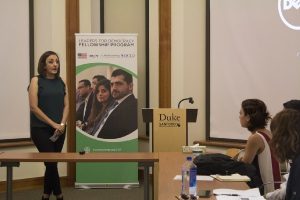
This year, World Learning has partnered with the American University of Beirut (AUB) and Duke Center for International Development (DCID) to provide academic instruction and hands-on training. During the first four weeks of the program, faculty and staff from AUB and DCID — as well as local experts, government officials, and activists — facilitated lectures, workshops, field visits, and roundtable discussions on topics such as participatory governance, conflict resolution, coalition building, negotiations, and effective communications. Fellows learned the qualities and practices of successful leaders, explored the root causes of local political and social challenges, and discussed the power of storytelling in civic campaigns.
“I believe in the power of youth,” said Ghada Thimech, a 2018 participant in the U.S.-based program. “I am hopeful that the program would help me enable my peers to enjoy a better future.”
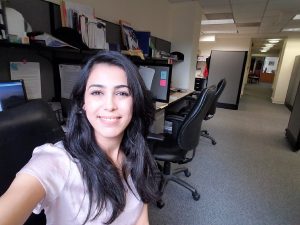
Now that their academic coursework is complete, the fellows are participating in full-time internships in Beirut, Lebanon, or Washington, D.C., where they cultivate professional networks, study best practices, and apply their academic learning by working on issues they’re passionate about. World Learning also organizes bi-weekly enrichment seminars for the Fellows to refine their project ideas and connect them with experts and practitioners.
“[My supervisors] gave me a different perspective which I never thought about,” said Moien Odeh, a 2016 fellow in the U.S.-based program, who interned at the Woodrow Wilson Center International Center for Scholars as part of the LDF program. “This changed my view on U.S. policy itself, and might also change the way we work back home.”
Over the course of the program, fellows will also use project design and management tools to develop a Civic Action Plan (CAP), which aim to either improve upon the fellows’ existing work or help them develop a new project in their communities. Past fellows have developed and implemented a variety of successful projects, including an advocacy campaign that promoted volunteerism in Gaza and a program that delivers educational resources to underserviced areas in Morocco.
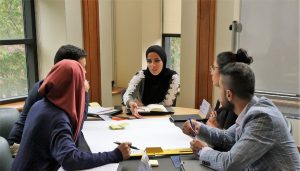
We look forward to seeing how this year’s class of fellows will work to make a difference, too, as they return to their home countries with new experiences, connections, skills and tools that can help them make meaningful impact in their communities.
To learn more about the LDF program, please visit: https://mepi.state.gov/education/ldf
— Written by Besher Al Makhlouf, Program Officer, Leaders for Democracy Fellowship (LDF) Program, and LDF intern, Kelsey Cochran
Communities Connecting Heritage Program Kicks Off Its Second Year
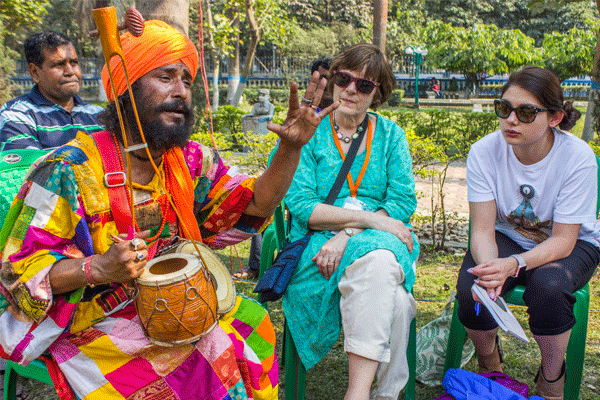 After the Communities Connecting Heritage (CCH) exchange program’s successful first year, World Learning is pleased to announce the five new cultural heritage projects that will receive funding in its second cycle. CCH, sponsored by the U.S. Department of State with funding provided by the U.S. Government and administered by World Learning, empowers youth to protect the cultural heritage of underserved communities around the world.
After the Communities Connecting Heritage (CCH) exchange program’s successful first year, World Learning is pleased to announce the five new cultural heritage projects that will receive funding in its second cycle. CCH, sponsored by the U.S. Department of State with funding provided by the U.S. Government and administered by World Learning, empowers youth to protect the cultural heritage of underserved communities around the world.
“Exchanges that connect and engage people from different communities are more valuable than ever,” said Christina Thomas, World Learning’s divisional vice president for youth exchange. “The Communities Connecting Heritage program offers an opportunity to do this in unique and creative ways, both at home in the U.S. and abroad. World Learning is thrilled to implement the second iteration of these cultural heritage projects and to be a part of this exciting and diverse community.”
Through virtual and in-person exchanges and exhibitions, the program supports new partnerships between U.S. and international cultural organizations and the communities they serve. CCH specifically helps these communities preserve their tangible and intangible cultural heritage, reinforce positive narratives, and advance cultural heritage through community outreach and public education.
The projects will be carried out among five U.S. organizations and five international organizations. Each organization was matched with an overseas counterpart during initial training and has been collaborating to develop engaging cultural heritage projects. The following five projects will be implemented in the next 12 months:
- Mandala Theater (Nepal) and Creative Connections (Connecticut)
Kalasanskriti ra Sampada: An Artistic Approach to Preserving Cultural Heritage and Community Healing will engage 30 youth from Nepal and the U.S. to capture and exchange art, audio, and video exploring their own cultural heritage, which they will use to facilitate workshops at local schools. - Bhasha Research and Publication Center (India) and University of Northern Colorado Anthropology Department (Colorado)
Reclaiming Heritage: The Intercultural Heritage Exchange Project will train up to 30 participants from the historically marginalized Chhara community in India and the Karenni refugee community in the U.S. to use virtual reality technologies to explore and document their respective cultural heritages, including family and spiritual traditions, festivals, performances, and natural heritage. - Youth of Osh (Kyrgyzstan) and New York Folklore Society (New York)
Cultural Bridge will challenge up to 30 youth to discover Kyrgyz and American cultural heritage by learning about oral history and cultural heritage documentation and contribute to preservation efforts by doing community service, producing media, and installing signage to support the cultural tourism industry. - Association MakeDox (Macedonia) and Dallas Black Dance Theater (Texas)
Widening the Lens will engage 12 African-American dancers and 12 Macedonian filmmakers to create a documentary exploring and celebrating African-American culture through dance and Romani heritage through music. - Centre for Fine Arts, Brussels (BOZAR) (Belgium) and Soul of Nations (Washington, D.C./Navajo Nation, Arizona)
Digital Natives will engage 10 young Native-American women from New Mexico and 10 young Belgian women from migrant families to create group artworks and video installations, exploring equality and women’s empowerment through the lens of personal narratives and cultural backgrounds.
The 10 organizations will now receive additional training on topics such as virtual exchange, experiential education, and participant care to prepare them to carry out their projects. The virtual exchanges will commence in fall 2018, leading up to the in-person exchanges and public exhibitions throughout the spring and summer of 2019.
About ECA
The U.S. Department of State’s Bureau of Educational and Cultural Affairs moves people to move ideas. ECA builds relations between the people of the United States and the people of other countries through academic, cultural, sports, and professional exchanges, as well as public-private partnerships. The State Department’s cultural diplomacy programs employ the arts to advance U.S foreign policy by sharing America’s artistic excellence, demonstrating America’s respect for other cultures, creating international networks, and deepening trust. www.eca.state.gov
Contact: [email protected]
About World Learning
World Learning works globally to enhance the capacity and commitment of individuals, institutions, and communities to create a more peaceful and just world through education, sustainable development, and exchange. Our programs advance leadership in more than 150 countries.
WiSci Campers Look to the Future
Over the last two weeks, the 2018 WiSci STEAM Camp brought together nearly 100 high school girls from five countries to learn about coding, robotics, leadership and more. They had some incredible experiences discovering new fields and innovative technologies with the help of trainers and mentors from Intel, Google, NASA, and more.
Now that the girls have returned home — including the U.S., Kenya, eSwatini, Ethiopia, and all over Namibia — we asked a few of them to share with us their hopes and visions for the future:
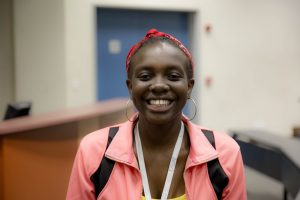
Natalie
15 years old
Kenya
Natalie has attended school in three countries due to her mother’s job with the UN Development Programme. Though some in her community believe girls should stay at home, Natalie’s mother was a role model for pursuing a career.
“My dream would be to graduate from Harvard Law School and then work in the U.S. as a forensic detective because my favorite show growing up was NCIS.”
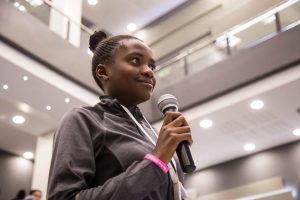 Iyambo
Iyambo
17 years old
Namibia
Iyambo has loved science since primary school. She has always been a curious person and relishes discovering everything from how the human body is composed of cells to building apps that are accessible to people in all communities. She says that the Google classes at WiSci confirmed her love for her chosen STEAM field:
“They taught us many things, how to develop apps and how you can use them to help people in our communities. It actually made me love computer science much more, which is why I’d like to pursue it as a future career.
I would like to complete my high school and go to university at least. If I can get a scholarship then I’ll go abroad. If not, I’ll come to this university, the Namibia University of Science and Technology, and do computer science. That’s what has been interesting to me so far and I think it’s the best career I can ever opt for.”
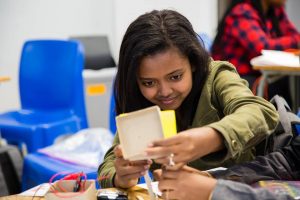 Beza
Beza
17 years old
Ethiopia
Beza’s love for challenge is what got her interested in pursuing STEAM: “In the 9th grade, I was listening to BBC News and they were saying how there’s really less involvement in girls in the STEAM fields,” she says. “I thought, ‘That’s not true. I love physics and math.’ I tried to push myself more into those fields. And then I fell so in love with them.”
In fact, Beza loves physics and math — plus her technical drawing classes back in Ethiopia — so much that she’s still debating her future career options. “I haven’t decided yet but I’m thinking about studying computer science and architecture, and software engineering,” she says.
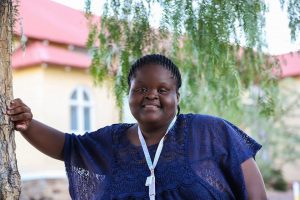 Samkay
Samkay
16 years old
eSwatini
Samkay loves writing poetry — a skill she demonstrated during the WiSci Talent Show — but she wants to pursue a career as a scientist and medical doctor. “My mom is a nurse and growing up alongside her just made me want to help people the way she does.”
Through WiSci’s NASA classes, Samkay has become more interested in the geospatial mapping tools that allow you to track changes in the environment. She also made other great discoveries: “When this opportunity came, it just landed on my lap and I had to take it because I saw it as an opportunity for a young woman like me to prove myself, for me to see my options and try my best to achieve the best for myself. So WiSci is like the greatest thing that has ever happened to me because I got to learn a lot of things, and I believe I’m still going to learn a lot of things.”
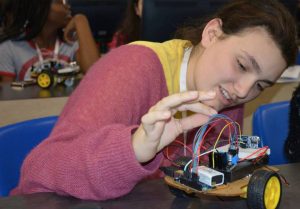 Renata
Renata
16 years old
United States
Renata has had a passion for STEAM for years, especially mathematics. Though she doesn’t know exactly what she wants to do for a career, spending time at WiSci has given Renata a chance to explore new fields and possibilities:
“I really want to advocate for something and do something on behalf of others when I’m working. So I could try to do something for accessibility like the people at Google or I could work for a nonprofit like my mom. I don’t know. I’m just so excited to get out there. One of our Google teachers, she worked for like five different industries. So I’m thinking why not just do that and try out every bit of your dreams?”
Women in Science (WiSci) Girls STEAM (Science, Technology, Engineering, Art & Design, and Mathematics) Camp is a private public partnership (PPP) between the U.S. Department of State’s Secretary’s Office of Global Partnerships, UN Foundation’s Girl Up Initiative, Intel Corporation, and Google. In 2018, the camp will bring approximately 100 high school girls from the African continent and the U.S. together for 13 days in Namibia to explore the STEAM fields and access mentorship opportunities and leadership training.
5 Amazing Innovations From the WiSci STEAM Camp
After two weeks of learning how to code, build autonomous robot cars, create accessible apps, and live together with girls from five different countries, the 2018 Women in Science (WiSci) Girls STEAM Camp drew to an innovative end yesterday.
Teams of WiSci campers have spent the past week designing creative solutions to problems in their communities, ranging from waste and environmental degradation to everyday problems in girls’ lives. Their ideas were astounding. They’ve come up with ways to make cars cleaner and keep girls safer.
At the closing ceremony, esteemed judges from the U.S. Department of State, Intel, Girl Up, and the Namibia University of Science and Technology presented four WiSci teams with awards, which were also made possible with the support of Cheryl Lewy, vice chair of World Learning’s Board of Trustees, and her husband Glen. These were given out in the categories of most innovative, best presentation/pitch, most technical rigor, and best all-around projects.
Want to learn more about how these campers are going to change the world? Here’s a look at five amazing projects that reveal the diverse possibilities of STEAM:
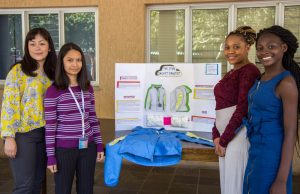
The Jeng Jacket Project
Elisa, Noelia, Grace, Johanna
What if your jacket could keep you warm and safe? That’s what these four girls from the U.S. and Namibia asked themselves when they started to work on their final WiSci projects. While brainstorming ideas, they discovered they all had a common problem: whether they were staying late for clubs or walking long ways to school in early hours, they all had to walk alone in the dark sometimes. So they designed the Jeng Jacket.
This jacket comes outfitted with heating pads that activate as you move to keep you warm, reflective velcro (which can be removed for washing), and an alarm that sounds when you pull a string. In their presentation, the girls explained that the alarm — which sounds like a siren — is designed to scare off anyone who might try to attack a girl. They had a lot of fun building it together and plan to keep working on it even after WiSci. “We really hope we can make this into a reality,” Grace said.
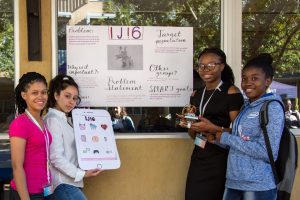 lJ!6 (“Girl” Upside-Down)
lJ!6 (“Girl” Upside-Down)
Jo-Ann, Leslie M., Leslie D., Hendrina
(Winners of “Best All-Around” project)
Team IJ!6 set out to solve a problem that was very close to their hearts: they wanted to provide service dogs to people who can’t see — and do so at a low cost. As Leslie M. explained during her presentation, years ago she and her brother were in a car accident that left him blind. Her mother wasn’t able to afford a service dog, as they can cost more than $15,000.
So IJ!6 created a robotic service dog made of cheap materials such as plywood and silicone as their WiSci project. “We invented what I personally wish had been invented,” Leslie M. said. They named the robot IJ!6 — the word “girl” written upside-down — to challenge the idea that only men can become engineers. And, to this team, there was no question as to their motivation. “The reason why this is important is because we care,” Jo-Ann said.
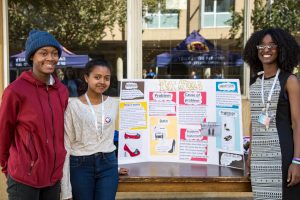 Flat Heels
Flat Heels
Emily, Bezawit, Marye, Tatiana
(Winners of “Most Innovative” project)
“Do you wear heels?” Emily asked the judges and other onlookers during her presentation. “Do you feel uncomfortable wearing them the whole day? Do you wish there was an easier way to change from flats to heels?” Team Flat Heels had a solution to this problem that most women will find familiar. Their project was a high heel that can convert into flats at the touch of a button.
Bezawit and Marye said the inspiration for the Flat Heel came from their performance in Ethiopia’s culture night at WiSci. They were both pulling double-duty as presenters and dancers and needed to quickly change out of their heels.
In their pretotype design for Flat Heels, the team envisions the shoes will come outfitted with a gas spring in the heel that can rise into a high heel or compress into a flat. The mechanism would be operated by a tiny arduino computer that a user could activate from a cell phone app. They’re hoping to turn this design into a reality when they get home — and judging from the responses from their fellow WiSci participants, there’s certainly a market for it. “Everyone said they would buy it,” Marye said.
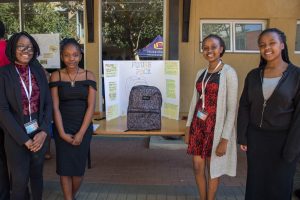 Future Pack
Future Pack
Daniella, Rakkel, Marina, Faith
Backpacks can be hard on your back — as the girls from this WiSci project team know well from years of commuting to their schools in eSwatini, Kenya, and Namibia. They wanted to build a better, more lightweight, backpack that will not only make for easy wearing but also prevent back pain for years to come.
They designed the Future Pack, a backpack outfitted with a system that distributes helium evenly throughout to reduce the bag’s weight by up to 25 percent. As with all the projects, the team faced significant challenges: “We were aiming to reduce the weight of the bag, but had to use a heavy helium canister,” Faith explains. But the team worked to find a way to compensate for that weight and are proud of their end result. “I feel like a scientist,” Faith said.
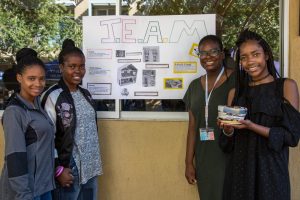 Just Expressing Artistic Motives (J.E.A.M.)
Just Expressing Artistic Motives (J.E.A.M.)
Joysy, Evandra, Angela, Miracle
Miracle was disappointed when the funding for her school’s art program was cut. She and her fellow art students had started working on a mural but ran out of paint and couldn’t afford more to finish it. But it turned out they weren’t done with art: instead, her teacher came in with magazines and other recyclable materials to transform into bowls and other forms of art..
Team J.E.A.M. — which also represents the girls’ initials — love both art and the environment and were excited to combine their passions into this upcycling project that transforms recyclable materials into art. When they return to their homes in the U.S. and Namibia, they’re planning to create dropboxes in their communities where they can leave recyclable materials for others to use. They’re also creating a Facebook page offering tutorials on how to turn cardboard, water bottles, and spoons into dollhouses, toy monsters, and windchimes.
The girls said they were inspired by their time at WiSci: “We’re here to express ourselves as well as learn, so we used our technology to allow people to express their artistic forms and share it with other people,” Miracle said.
Women in Science (WiSci) Girls STEAM (Science, Technology, Engineering, Art & Design, and Mathematics) Camp is a private public partnership (PPP) between the U.S. Department of State’s Secretary’s Office of Global Partnerships, UN Foundation’s Girl Up Initiative, Intel Corporation, and Google. In 2018, the camp will bring approximately 100 high school girls from the African continent and the U.S. together for 13 days in Namibia to explore the STEAM fields and access mentorship opportunities and leadership training.
A Day in the Life of a WiSci Camper
Every day is a busy — and fun — one for the campers at the 2018 Women in Science (WiSci) Girls STEAM Camp. Beyond learning how to code, build apps, and design tools to help solve problems in their communities, this group of girls are learning about leadership, women’s empowerment, and each other.
Take a peek into the daily life of our campers through the eyes of Cori, a 16-year-old from Atlanta who came to WiSci because she’s interested in studying chemistry and eventuallypursuing a career as a forensic scientist.
6:35 a.m.: Wake up!
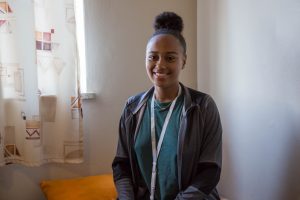
For Cori, being at WiSci — where she’s surrounded by dozens of girls from the U.S., Namibia, Kenya, Ethiopia, and eSwatini (the former Swaziland) — has not only taught her how to wait her turn for the shower. She’s also learned a lot about herself:
“I know I’m African American, but I never realized my roots. This might not be the part of Africa I’m from and I might not have met anyone from the part of Africa that I’m really from, but I never learned about Africa in history classes. For some reason they skip over that. I feel closer to myself now.”
8:00 a.m.: Breakfast
On the menu today: Weet-Bix, ham, cheese, and bread.
9:00 a.m.: Class with Girl Up 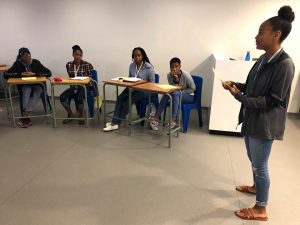
As a WiSci partner, the United Nation Foundation’s Girl Up has been leading leadership and empowerment classes each morning. Today, Cori and her classmates learned about public speaking and practiced interviews and elevator pitches.
Cori plans to start a Girl Up club when she gets back to her high school, where she says there aren’t many outlets for girls. “I learned that there’s more than one way to be a leader, that anyone can be a leader,” she says.
10:30 a.m.: Final project planning
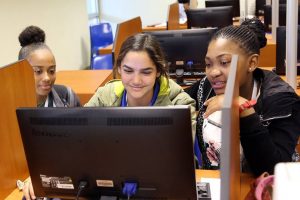
For this last week of WiSci, the campers will be working on projects using their STEAM skills to find innovative solutions to problems in their communities. Cori and her classmates Elena, Ntsikelelo, and Shakyra are devising a way to use the kinetic energy that girls in rural areas create while biking to school — sometimes several hours each way — to charge their cell phones, which can be a lifeline in their daily lives.
12 p.m.: Lunchtime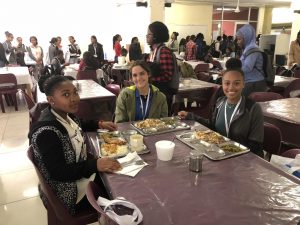
1:00 p.m.: Intel classes begin
Today, a team of trainers from Intel — a WiSci partner — kicked off their week of classes. Cori and the other campers learned coding for artificial intelligence, built CurieBots, and designed prototypes of tools that can assist in disaster scenarios from alien invasions to sharknados.
WiSci partners have been leading classes since the camp began. Last week, trainers from Google and NASA taught the girls how to build apps and use geospatial mapping tools. Even though Cori is primarily interested in chemistry, she realized that she enjoys making apps and hopes to continue trying to do so when she gets home.
3:30 p.m.: Snack break 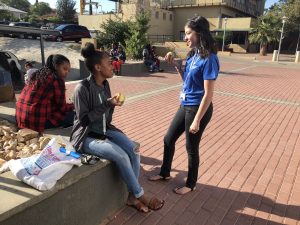
Snack choices today: apples, bananas, or cheddar popcorn.
4 p.m. Back to class 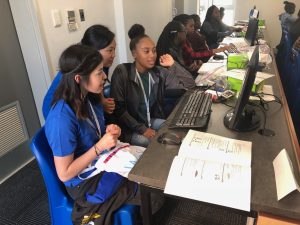
Having learned the basics of the Python programming language, Cori and her classmates began testing the Smart Animal Surveillance System — also called SASSY — that can recognize pictures of animals held in front of a webcam. Cori says she enjoyed learning from the Intel trainers:
“They’re really fun. You could tell that they’re really invested and they really enjoy this experience. It feels like they’re in it with us. It’s not just classes. They bond with us.”
6:30 p.m. Dinner
7:30 p.m. Talent show
Though there was lots of amazing dancing and singing on display, Cori’s favorite performance of the night was a public speaking demonstration from Iyambo, one of the girls from Namibia. Iyambo spoke passionately about how her fellow WiSci campers should not be afraid to pursue careers in science as they are all strong and intelligent women.
“It was really empowering,” Cori says. “You could tell she meant what she said. It spoke to me.”
10:00 p.m. Lights out!
Women in Science (WiSci) Girls STEAM (Science, Technology, Engineering, Art & Design, and Mathematics) Camp is a private public partnership (PPP) between the U.S. Department of State’s Secretary’s Office of Global Partnerships, UN Foundation’s Girl Up Initiative, Intel Corporation, and Google. In 2018, the camp will bring approximately 100 high school girls from the African continent and the U.S. together for 13 days in Namibia to explore the STEAM fields and access mentorship opportunities and leadership training.
The 2018 WiSci STEAM Camp Kicks Off with NASA, Google, and Teen Girls From Five Countries
This week, nearly 100 high school girls from across the U.S. and sub-Saharan Africa have arrived in Windhoek, Namibia, where they’re learning how to say hello to Harry Potter through code, design apps for painting pictures on their tablets, build lights out of tiny computers — and so much more.
These teenagers are taking part in the 2018 Women in Science (WiSci) Girls STEAM Camp, which has brought together girls from the United States, Namibia, Kenya, Ethiopia, and eSwatini (the former Swaziland) for two weeks to learn about one another’s cultures and develop their skills in science, technology, engineering, arts and design, and mathematics (STEAM).
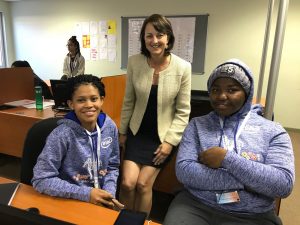
“It’s a wonderful opportunity for the girls in terms of broadening their world and making them stronger and realizing what opportunities and potential is out there, particularly in the STEAM fields,” said U.S. Ambassador to Namibia Lisa Johnson, who has attended a number of WiSci sessions this week.
Funded by the U.S. Department of State and run by World Learning, WiSci operates through a public-private partnership with Google, NASA, Intel, and the United Nations Foundation’s Girl Up. Representatives from these partner organizations are leading classes introducing teens to the STEAM fields and mentoring the girls on their potential academic and career paths.
Funded by the U.S. Department of State and run by World Learning, WiSci operates through a public-private partnership with Google, NASA, Intel, and the United Nations Foundation’s Girl Up. Representatives from these partner organizations are leading classes introducing teens to the STEAM fields and mentoring the girls on their potential academic and career paths.
NASA and Google kicked off the academic components of WiSci this week, offering hands-on classes and activities.
With the help of NASA instructors, the girls tried their hands at Javascript programming using satellite data visualization tools like the Google Earth Engine. “It was fun to see the girls start putting things into the computer and then get that a-ha moment when they pressed the ‘run’ button and it did what they had instructed it to do,” Ambassador Johnson said. “You see it light up in their eyes. It was definitely having an impact.”
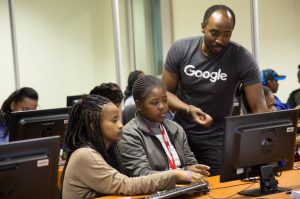
Google employees also highlighted how they use technology to make a difference in people’s lives. They demonstrated some of that technology — including theTalkBack app for vision-impaired Android users and a smart spoon designed for people with hand tremors — and helped girls build their own apps that take accessibility into account.
“I challenge you to go out into your classrooms today and build something great,” said Eve Andersson, director of accessibility engineering at Google.
WiSci also focuses on leadership development and cultural exchange. Camp counselors are hosting daily leadership development and empowerment workshops with the campers with the support of Girl Up and, in the evenings, the campers are putting on performances exploring the music, dance, customs, and more from their home countries.
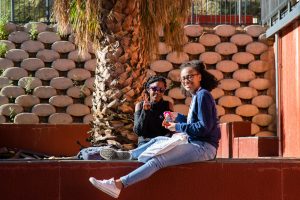 “You can see how excited they are to be here,” Ambassador Johnson said. “They’re not hesitant at all to ask questions, they want to learn, they’re super engaged. That’s really awesome to see.”
“You can see how excited they are to be here,” Ambassador Johnson said. “They’re not hesitant at all to ask questions, they want to learn, they’re super engaged. That’s really awesome to see.”
Next week, the girls of WiSci will turn their focus to robotics and AI as Intel takes over classroom duty, and they’ll also begin to develop their own projects to explore firsthand how STEAM education can make a difference in the world.

